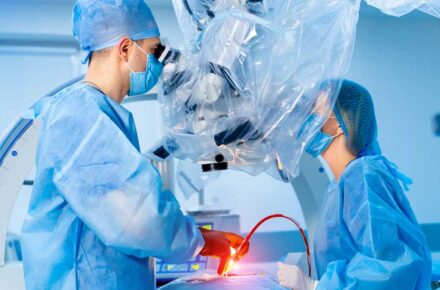
Robotic-assisted surgery has become a revolutionary alternative to traditional open surgery, especially in reducing the risk of infections. This advanced surgical technique involves the use of robotic arms equipped with small instruments, controlled by a surgeon through a computer. By enabling precise movements through tiny incisions, robotic surgery allows surgeons to perform intricate procedures with enhanced flexibility and accuracy, making it particularly beneficial for complex operations.
Robotic surgery vs Traditional open surgery
In contrast to traditional open surgery, which involves large abdominal incisions, robotic surgery minimizes tissue disruption and reduces the chances of complications like infections. This is especially true for gynaecologic procedures such as laparoscopic hysterectomy, myomectomy (removal of uterine fibroids), and sacrocolpopexy (repair of pelvic organ prolapse). In robotic surgeries, the use of a high-definition endoscope provides clear visualization of internal organs, while thin, flexible instruments can access challenging anatomical areas without significant tissue displacement.
One of the key advantages of robotic surgery over traditional open surgery is the significantly lower risk of Surgical Site Infections (SSIs). Traditional surgeries often require large incisions and extensive tissue manipulation, which expose the surgical site to potential contaminants. SSIs are the most frequent source of infections in surgical patients and are the second leading cause of hospital-acquired infections. In the United States alone, approximately 500,000 patients develop SSIs each year. These infections result in prolonged hospital stays, delayed recovery, and increased medical costs. Additionally, patients with SSIs are 60% more likely to require intensive care, five times more likely to face hospital readmission, and twice as likely to experience 30-day mortality compared to those without SSIs.
Robotic-assisted surgery addresses these issues by creating smaller incisions that minimize exposure to infection-causing pathogens. With less blood loss, reduced pain, and shorter recovery times—often as little as two to three weeks compared to several months in traditional surgery—robotic procedures are transforming patient outcomes. Furthermore, factors like clean surgical environments and shorter procedure durations, which are often achieved with robotic techniques, contribute to a reduced risk of infection.
Studies indicate that 5.2% of patients undergoing surgery develop SSIs, with longer procedures and contaminated wound sites being significant risk factors. Robotic surgery, with its minimally invasive approach and precision, effectively mitigates these risks, making it a safer and more efficient option for patients.




